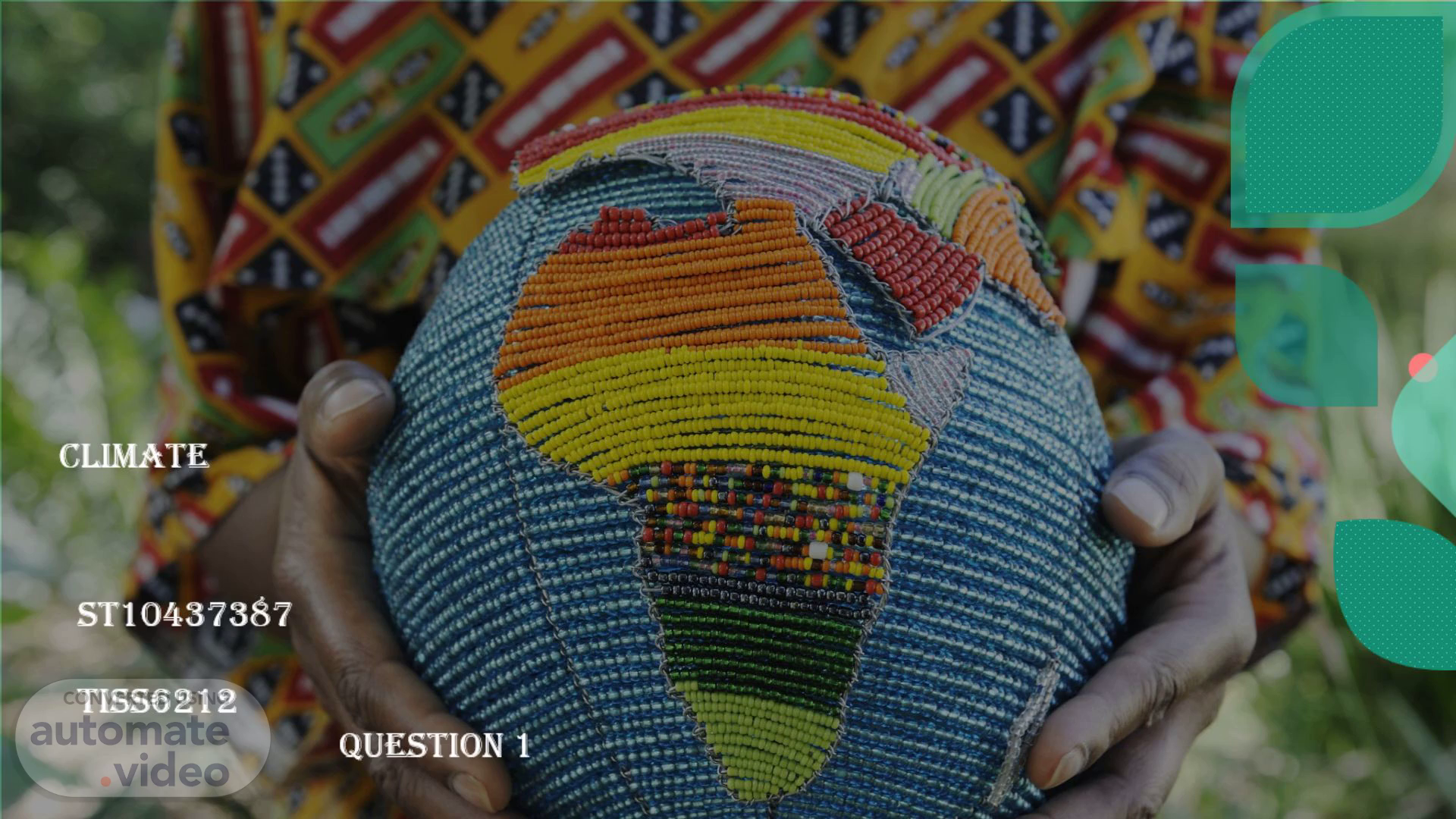Scene 1 (0s)
hand holding ball. South Africa. Climate. ST10437387 TISS6212 Question 1.
Scene 2 (9s)
[Audio] "South Africa is full of different landscapes – from grassy plains to deserts and colourful fynbos. But to understand why plants grow where they do, we need to look at climate, weather, and vegetation. These three are always connected. Scientists explain that climate change and environmental systems are linked to food, water, and even people's health (Adom, Simatele & Reid, 2022; Chersich, Wright & Venter, 2018). That's why geographers never study them in isolation.".
Scene 3 (44s)
[Audio] Climate: The average weather of a place over many years. Weather: The daily conditions – hot, cold, rainy, or windy. Not to be confused with weather, climate represents Earth's average conditions over time. Climate isn't the same thing as weather. Weather is the condition of the atmosphere over a short period of time; climate is the average course of weather conditions for a particular location over a period of many years. One of the factors that influences climate is the angle of the sun's rays. In the tropics, between 23.5° N and 23.5° S, there is at least one time of year when the noontime sun is directly overhead and its rays hit at a direct angle. This produces a hot climate with relatively small temperature differences between summer and winter. 3:18.
Scene 4 (1m 39s)
[Audio] Case Studies in South Africa Fynbos (Western Cape) Climate: Mediterranean – hot, dry summers and cool, wet winters. Vegetation: Shrubs, proteas, and ericas. Fires help seeds grow. Link: Winter rain is essential for fynbos survival (Dilley et al., 2012). Savanna (Limpopo/Mpumalanga) Climate: Hot summers with summer rainfall, dry winters. Vegetation: Tall grasses with scattered trees like acacias and baobabs. Link: Rainfall supports grasses, while dry seasons limit tree growth (Scholes & Walker, 1993; Ansah, Amoadu & Obeng, 2024). Karoo (Northern Cape) Climate: Semi-desert, very hot in summer, cold in winter, little rainfall. Vegetation: Succulents and hardy shrubs. Link: Plants store water to survive droughts (Dean & Milton, 1999). Grassland (Highveld, Free State/Gauteng) Climate: Summer rainfall, cold winters. Vegetation: Grasses dominate, few trees. Link: Frost in winter prevents tree growth, but grasses thrive (Mucina & Rutherford, 2006). Desert (Namib/Richtersveld, Northern Cape) Climate: Extremely dry, very little rainfall. Vegetation: Sparse plants like aloes and lichens. Link: Only plants adapted to survive with almost no water can grow here (Ramavather & Bangura, 2025)..
Scene 5 (3m 29s)
[Audio] While weather refers to the current state of the atmosphere, climate looks at the historical and average weather patterns over a longer period of time. Weather is more localized and short-term, while climate is more regional or global and long-term. In conclusion, the Venn Diagram helps us visualize the relationship between weather and climate..
Scene 6 (3m 51s)
[Audio] So, climate, weather, and vegetation are always connected. Climate shapes the plants that grow, weather changes them daily, and vegetation can even influence rainfall and temperature. In South Africa, from the fynbos to the savanna, the Karoo to the grasslands and deserts, we see how these three work together. That's why geographers never study them in isolation – they are part of one big system (Adom, Simatele & Reid, 2022; Johnston, 2023).".
